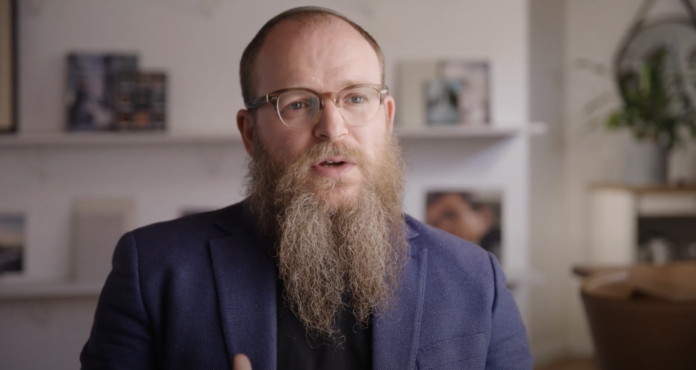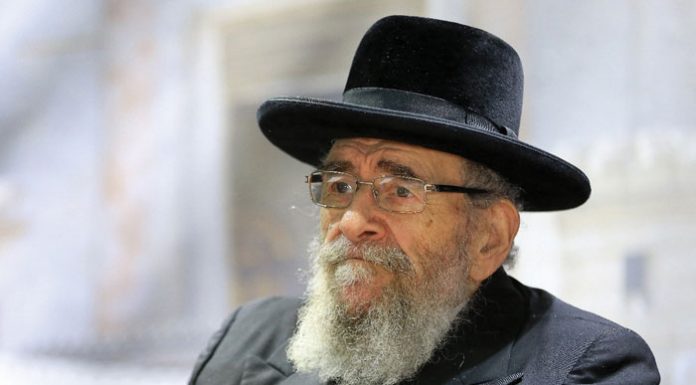Yisroel Dolnikov has quite a story. Born in Russia with no knowledge of Yiddishkeit, he went on to found one of the top real estate rendering design firms in the world—proudly representing Judaism every step of the way.
While some entrepreneurs are business minded from a young age, Yisroel describes himself as the opposite: When he first stumbled into the industry, he had no business dreams or commercial aspirations at all. An artist at heart, he took his knowledge of architecture and his knack for creativity and began creating digital renderings for Chabad shluchim looking to build new Chabad Houses. Ultimately, he transitioned to creating high-end renderings for real estate developers, transforming his fledgling business into a top-tier company with 100+ employees across several continents.
Yisroel’s company, Binyan Studios, is not limited to renderings. It is a full-scale content creation company for real estate developers, including film production, interactive applications, AR, VR and content strategy. (Our conversation focused on the rendering aspect of his business, because that is his bread and butter.)
We spoke about everything from AI to the UAE, and through it all, the most impressive thing to me was Yisroel’s personal mission to represent Yiddishkeit with every move he makes.
—Nesanel
“I was born in the former Soviet Union. My father is Russian and my mother comes from Zhytomyr, Ukraine. I lived in Russia until I was ten years old. Growing up, I knew absolutely nothing about Yiddishkeit. Zero. I never even went into a shul. But my passport said I was Jewish, and Russian society made sure I never forgot it.
“Occasionally, kids would scream at me, ‘You dirty Jew!’ There was also the fact that Jews couldn’t go to certain universities. It was state-sponsored anti-Semitism. Even for Jews who knew nothing about Judaism, the country did a good job of making us feel as if we didn’t belong. If you were able to leave Russia, you left.
“When I was ten, my parents and I moved to Sydney, Australia, because of the country’s good immigration program. My father was working in IT and was doing pretty well in the ’90s. My mother is a scientist with a PhD, working on the cutting edge of genetic cancer research. When we arrived in Australia, both my parents found work, and I went to the local public school.
“It was during my teen years in Australia that I became frum. The Yeshiva Gedola of Sydney included a group of Chabad bachurim who made themselves available to learn with secular students in the community. My friend’s mother heard about them and encouraged me and my friends to study with them. We were intrigued, and a few of us agreed to go together. We were spiritually minded and always searching for something, and we found it in Yiddishkeit. I started learning with these bachurim and even spent a few Shabbosim with them. Over the next few years, I grew in my observance.
“After high school, I went to the College of Fine Arts in Sydney, where I received my bachelor of design. Afterward, I decided to devote myself to learning. I went to Mayanot, a yeshivah in Eretz Yisrael. From there I learned in Kfar Chabad, and then in a yeshivah in Montreal.
“I got married in Moscow at the age of 24. Although my wife’s family was in Pittsburgh and mine was in Australia, we had a lot of extended family in Russia, so Moscow was a logical (although unlikely) location for the wedding.
“We moved to Melbourne, and I joined a kollel there. I didn’t have US citizenship, and since the kollel in Melbourne was a paying one, it was a good option for us.
“A couple of years passed and we found ourselves in Pittsburgh. We had two kids and were living in a really small apartment. I became a rebbi in a local yeshivah, but it wasn’t for me. I didn’t enjoy it. We looked into a few opportunities to go on shlichus in America, but it didn’t sit right with me. I think my wife might still be disappointed that we didn’t go through with it.
“Although we didn’t go on shlichus, we lived in Pittsburgh in 2005 and 2006 so that my wife could obtain her US citizenship while I applied for an R-1 visa (a non-immigration visa for religious workers), which would enable me to work in the US as a rabbi.
“I don’t have any businesspeople in my family, and I was not interested in the business world at all. I was far more interested in creativity and spirituality. It sounds strange, but I always had this feeling of wanting to change the world somehow. I play the tenor saxophone, and I used to paint as well. I admire creativity and wanted to make a living doing something that didn’t have a commercial goal—something more eternal and meaningful.
“At one point, I decided to go to Australia to attend the University of New South Wales for a degree in interior architecture. I was traveling back and forth from Pittsburgh to Australia, but it wasn’t sustainable, so I paused my degree after a single three-month semester. While I was there, I met Chris Worsfold, who became my mentor in this industry. He’s an expert in creating digital renderings based on architectural drawings. This is a key skill that is vital to many aspects of real estate. The most common example is when a developer wants to secure funding and committed tenants even before beginning to build a project; the way to do that is by showing them digital renderings so they get a feel for the project before it exists. Interestingly, only three years after I met Chris, I hired him to work for me. Today he is one of the directors at Binyan.
“I liked architecture because I felt it was a good mix of the creative and pragmatic aspects of design. You had to work on space and composition and always factor in the human aspect of a space.
“I found two small architectural firms in Pittsburgh that were looking for some help in their renderings departments, and I did some small projects for them. One of their clients was a Chabad House that was constructing a new building and wanted a rendering to show to prospective donors. I did the rendering and then went to the Kinus Hashluchim in Crown Heights to drum up some business.
“After that, I made a few renderings for several other shluchim who also wanted them to present to potential donors. The shluchim would bring me the architectural drawings and I would use 3D Studio Max software (which is today called 3ds Max) to create digital renderings showing what the final building would look like. I guess they were happy with my work, because they recommended me to other shluchim.
“I developed a mini business making renderings for Chabad Houses, and I thought that would be the extent of it. I had no grandiose visions of having a large company. More than that, I had no intention to make renderings for anyone other than Chabad Houses. I simply wasn’t a business-minded person—at the time. Time and life have changed me in that regard.
“After my wife obtained her US citizenship, we decided to move back to Australia so that I could finish my degree. We settled in Sydney, Australia, and we never left. I got an additional job working as the director of adult education at Chabad Double Bay; I’m grateful to Rabbi Yanky Berger for giving me that opportunity.
“One day, I met a businessman at the Chabad House and told him about my work making renderings for Chabad Houses. I think I charged a couple hundred dollars per Chabad House, and yet, I saw it as my career. I asked this man if he had any leads for me, and he told me to try pitching my work to people other than shluchim, such as those in property development. Developers often need renderings to show prospective investors as well as prospective tenants, so it made perfect sense. It might sound odd, but this had never occurred to me. I thought to myself, ‘Okay, who do I know in property development?’ and the answer was nobody. But I knew I could find someone who knew someone.
To read more, subscribe to Ami





















